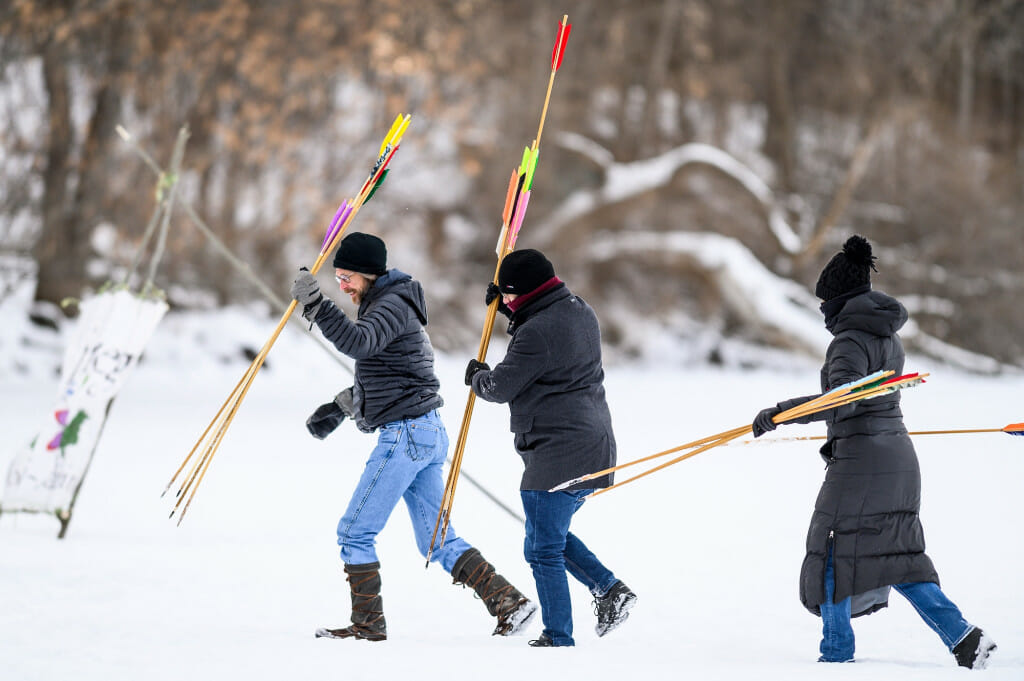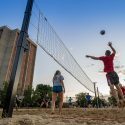Photo gallery A jump into Ojibwe tradition on the ice of Lake Mendota
Students and others learned how to fling a snow snake (gooniikaa-ginebig) and other traditional Ojibwe hunting skills at the Ojibwe Winter Games on Lake Mendota on Feb. 3. The games, founded in 2012 in Lac du Flambeau, are designed to inspire young and old alike to get out and exercise, enjoy the winter, and engage with Ojibwe culture in a meaningful and positive way. In Ojibwe culture the winter games taught children necessary hunting skills at a very young age. The event was supported by the Department of German, Nordic, and Slavic+; the Center for the Study of Upper Midwestern Cultures; and Our Shared Future.
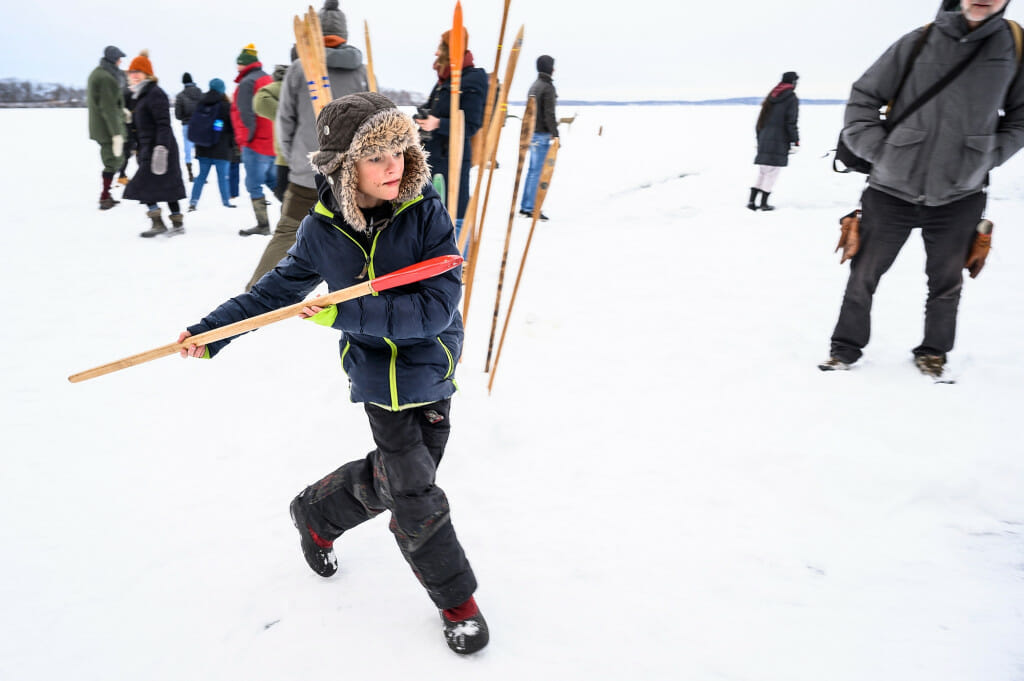
Nine-year-old Emile Pell prepares to throw a snow snake (gooniikaa-ginebig). Snow snakes are carved wooden poles designed to slide well over snow or ice. The purpose of the game is to see who can slide their snow snake the farthest along a specially prepared track. Photo by: Althea Dotzour

Program organizer Wayne Valliere (Lac du Flambeau Ojibwe), left, helps undergraduate and Ojibwe language student Emmett Lockwood position an atlatl (spear throwing tool) and spear. Photo by: Althea Dotzour
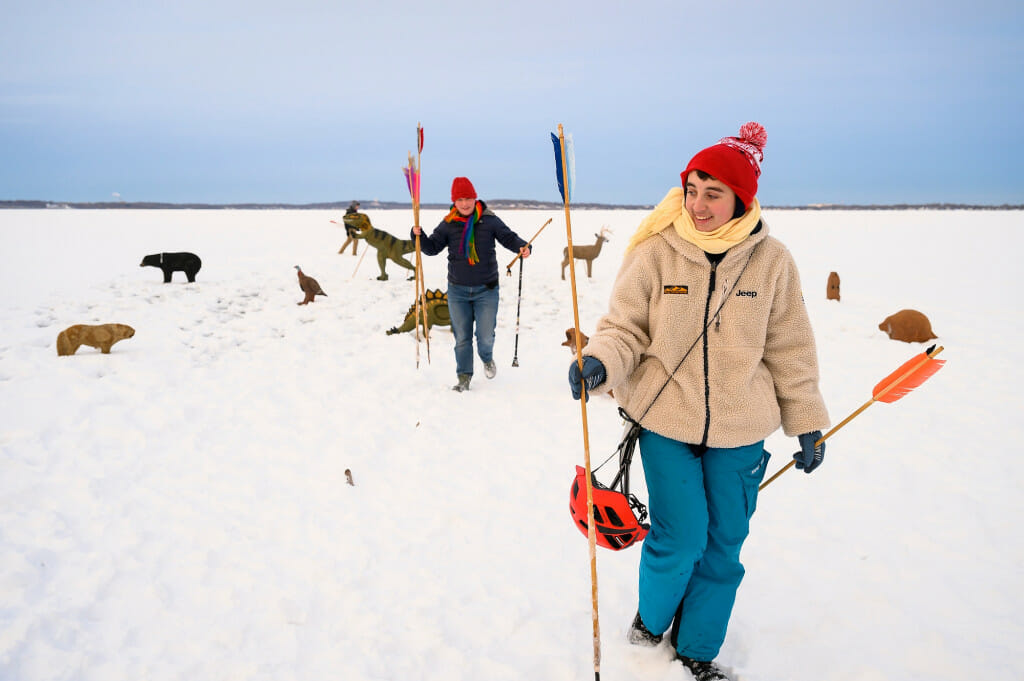
Undergraduates and second semester Ojibwe language students Emmett Lockwood, left, and Rowan Hildebrandt collect spears lying amid dinosaur, bear and deer targets. Photo by: Althea Dotzour
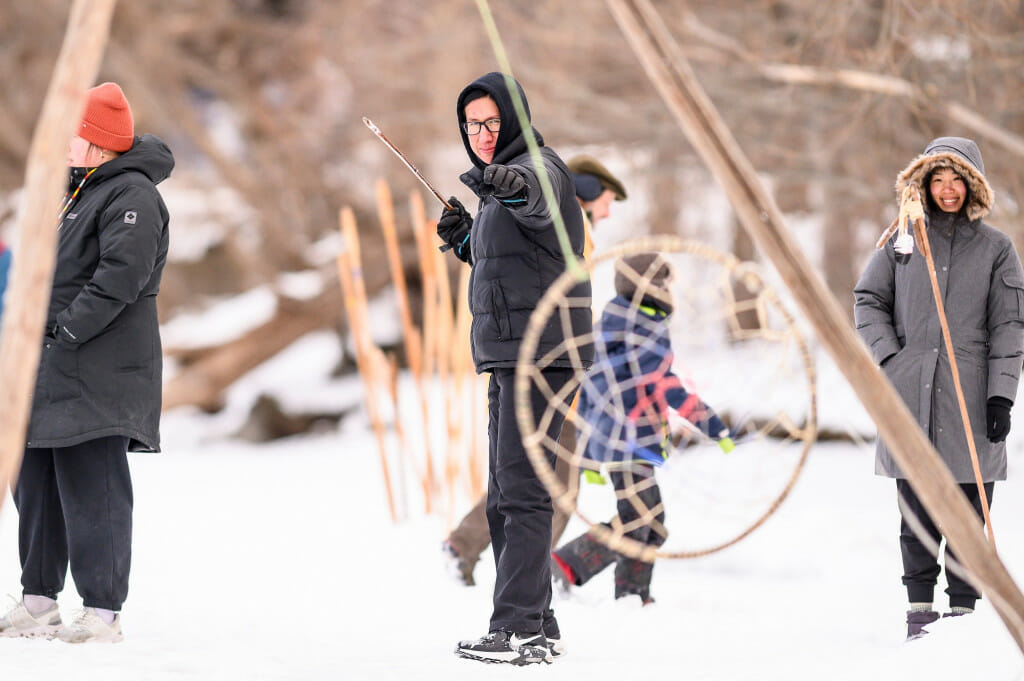
Undergraduate Kane Funmaker, Ho-Chunk Bear Clan member, prepares to throw a lance at a swinging hoop in the dakobijigan-minawaa zhiimaagan game while his partner, graduate student Shiqi Shen, looks on. Photo by: Althea Dotzour
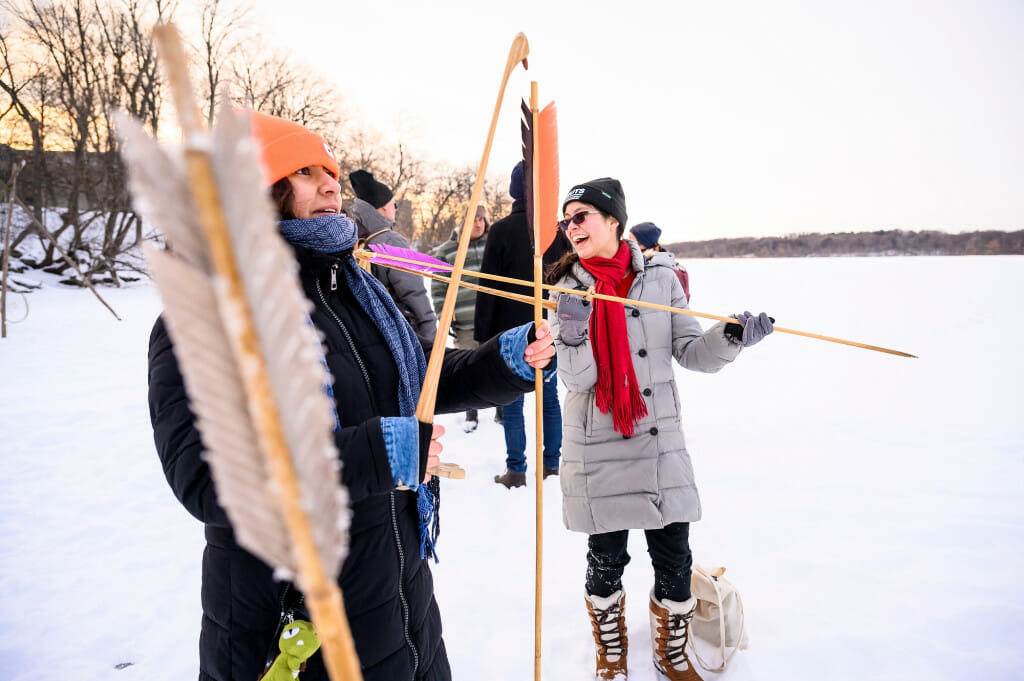
Undergraduate Isabella Escobar (of the Purépecha Nation), right, laughs while Diana Vera (of the Otomi Tribe) fits a spear onto an atlatl (spear throwing tool). Photo by: Althea Dotzour
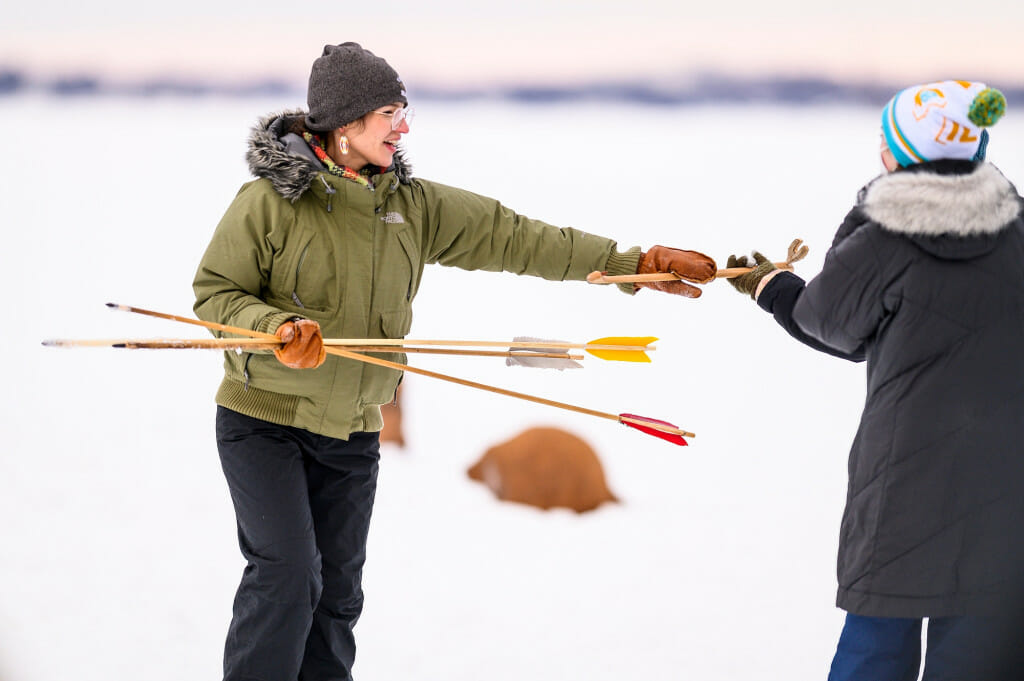
UW undergraduate Abby Sunde, Indigenous UW (NDGNS) fellow and first generation, direct descendent of the Fond du Lac Band of Lake Superior Ojibwe, gathers spears. Photo by: Althea Dotzour
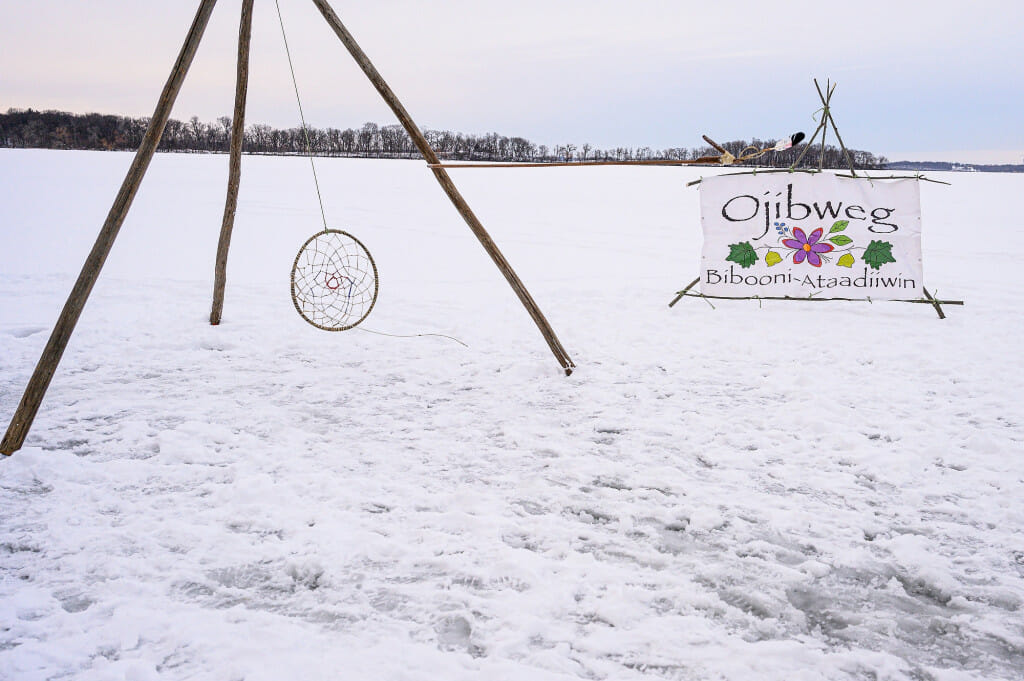
A hoop for the hoop and spear game (dakobijigan-minawaa zhiimaagan) and a sign welcome visitors to the Ojibwe Winter Games on Lake Mendota. Photo by: Althea Dotzour
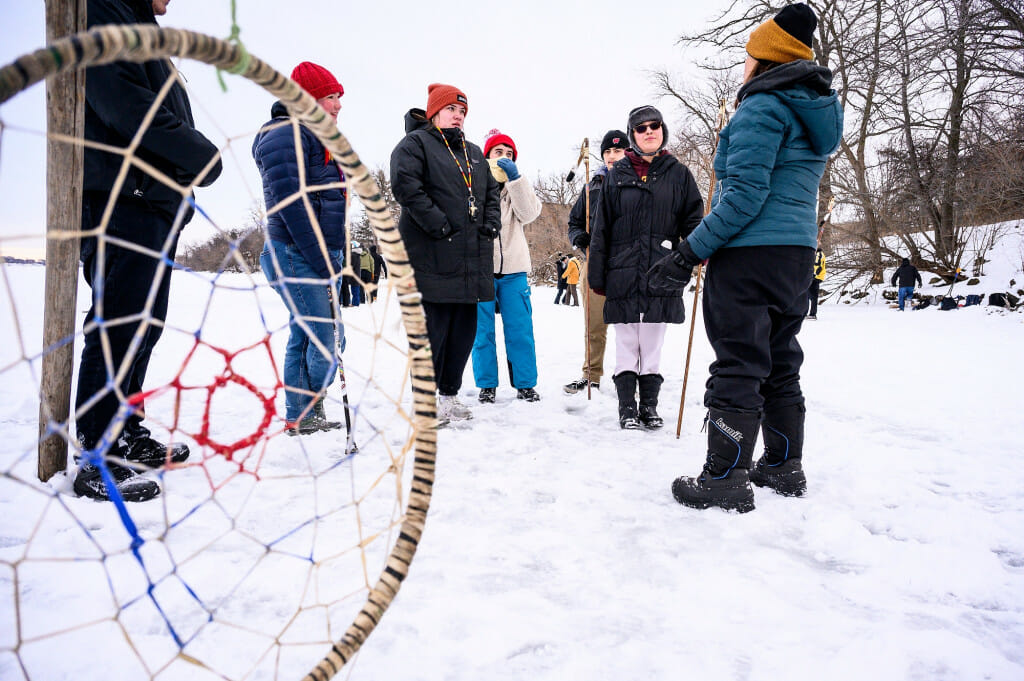
Ann Sherwood, an Ojibwe language assistant at the at the Lac du Flambeau Public School, explains the hoop and spear game (dakobijigan-minawaa zhiimaagan) to participants including several UW students taking second semester Ojibwe. Photo by: Althea Dotzour
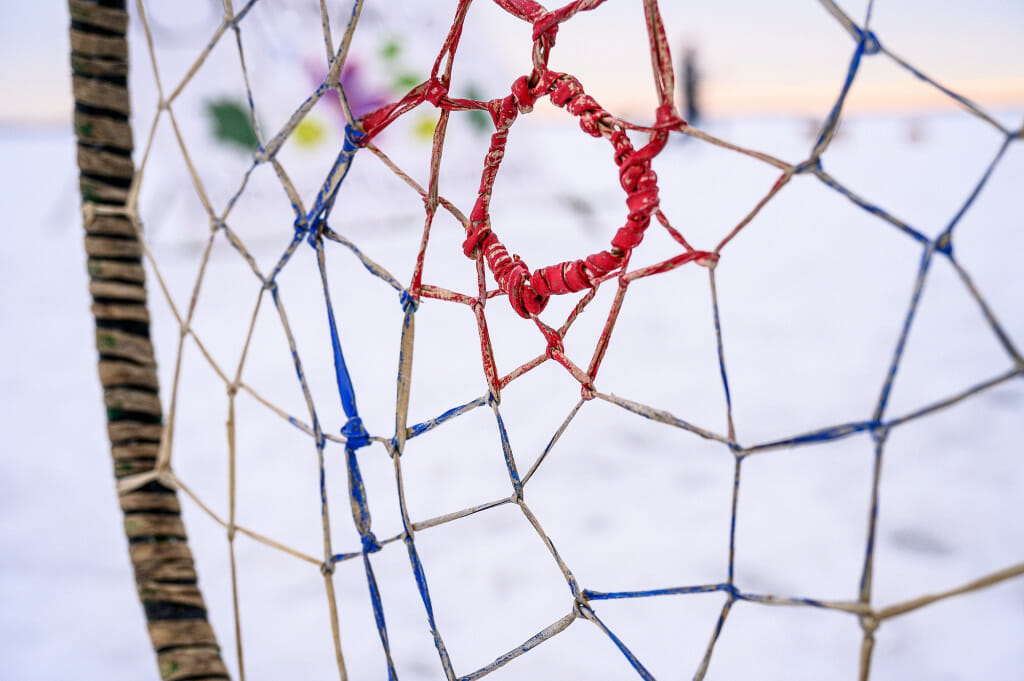
A hoop (dakobijigan-minawaa) awaits a spear-thrower. The red center represents ayaabe (the buck) and is worth 3 points, the blue ring represents niiniijaanii (the doe) and is worth 2 points, and the unpainted outer ring represents gidigaakoohns (the fawn) and is worth 1 point. Photo by: Althea Dotzour

Silas Cleveland, a Ho-Chunk Nation member and UW student, prepares to throw a lance at a bear-shaped target at Ojibweg Bibooni-Ataadiiwin. Photo by: Althea Dotzour

Michelle Konkol, a fourth-grade teacher from Stevens Point, uses an atlatl (spear thrower) to launch a spear toward a set of targets. Konkol teaches history to fourth graders and came down for the games to learn more about them. Photo by: Althea Dotzour
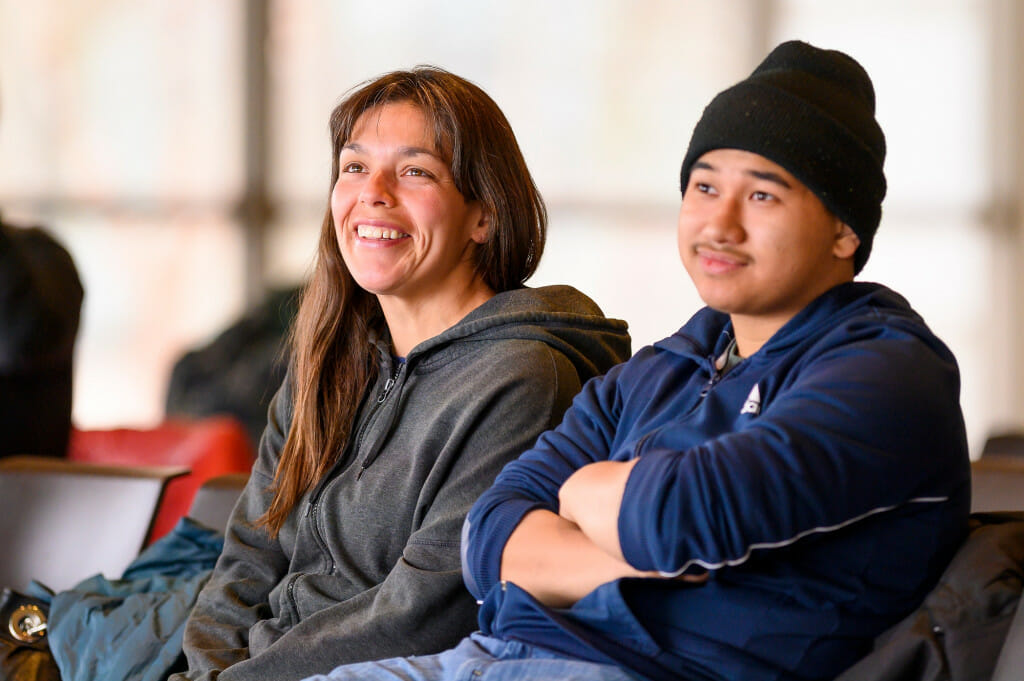
Anna Sherwood (of the Aleut Nation) and her nephew Derek Phi smile as their mentor Wayne Valliere introduces the Ojibwe Winter Games. Sherwood is an Ojibwe Language classroom assistant in the Lac du Flambeau Public School. Photo by: Althea Dotzour
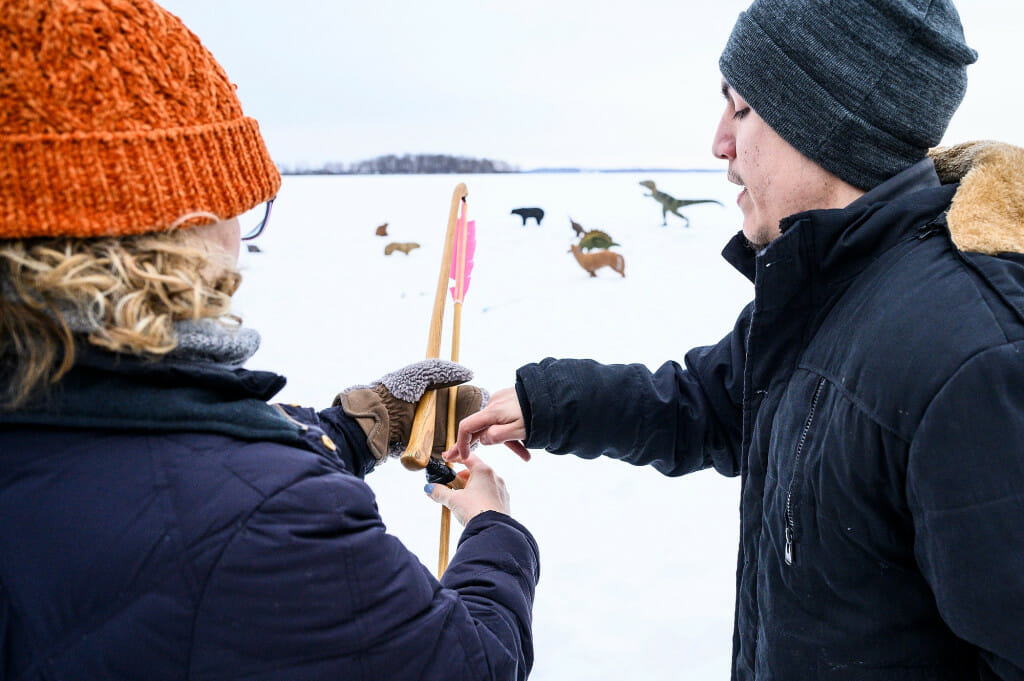
Spencer Smith, an apprentice of Wayne Valliere, right, shows Michelle Konkol, a fourth-grade teacher from Stevens Point, how to use an atlatl (spear thrower). The atlatl was a precursor to a bow and arrow and allowed the hunter to throw a dart or spear from a farther distance. Photo by: Althea Dotzour
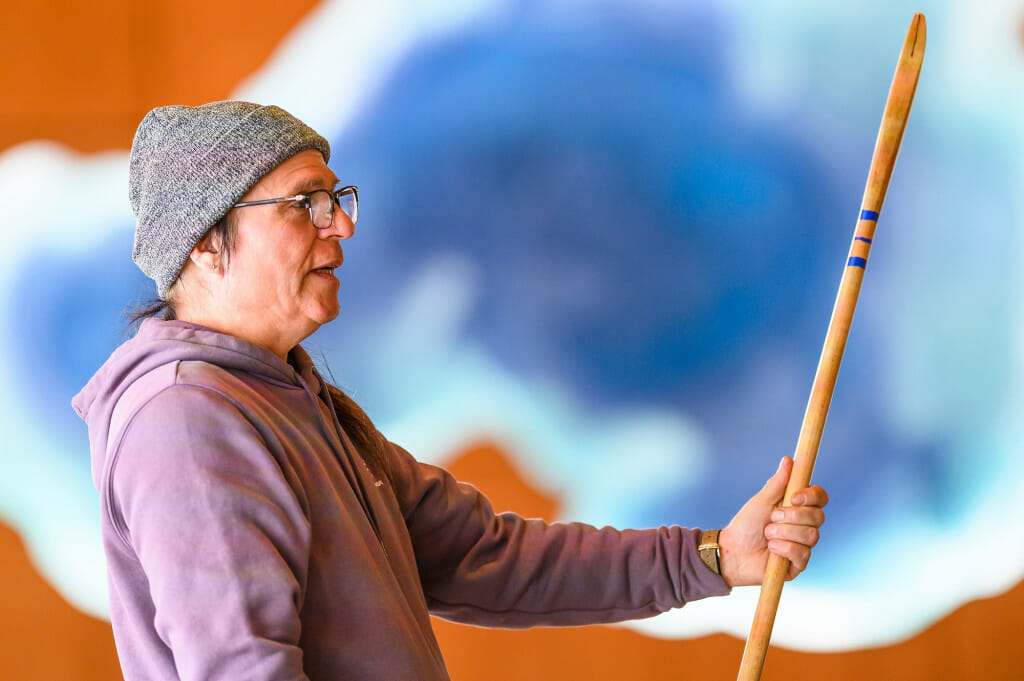
Wayne Valliere, an Ojibwe language and culture teacher at the Lac du Flambeau Public School, introduces participants to the Ojibwe Winter Games in the Mendota Room at Dejope Residence Hall. Valliere, whose native name is Mino-giizhig, holds a snow snake and describes how the winter games taught children at a very young age how to throw and push so as they came of age they would have necessary hunting skills. Photo by: Althea Dotzour

